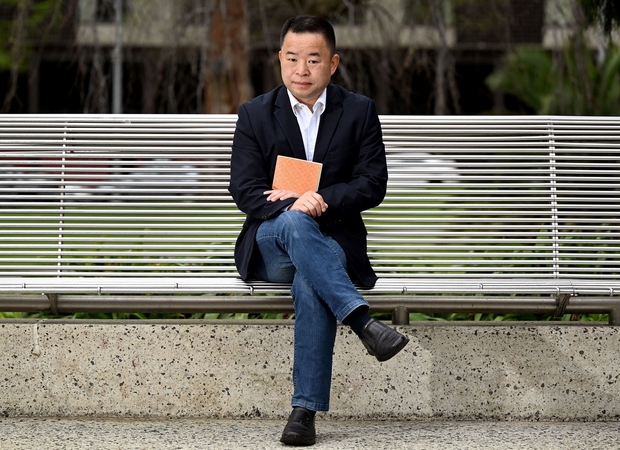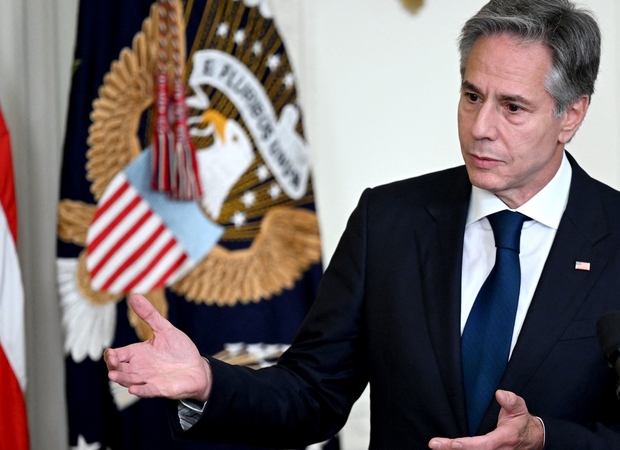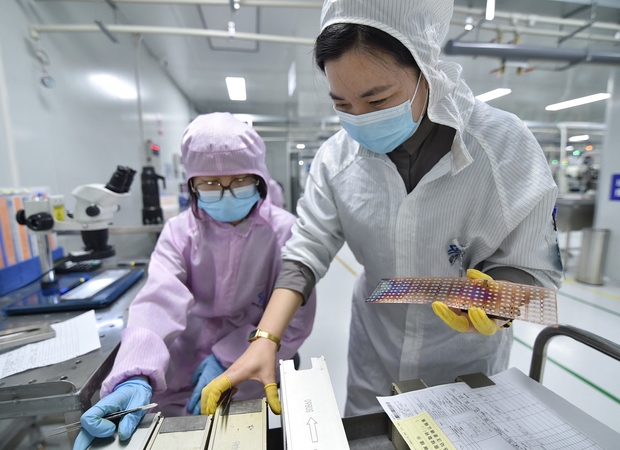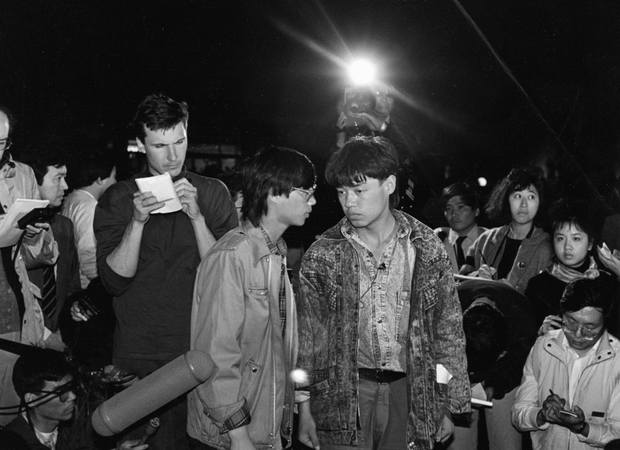The Tiananmen Square crisis in 1989 was a turning point for China. Weeks of student-led demonstrations turned into the largest protest for political reform in the history of the People’s Republic. The bloody military crackdown that crushed the movement on the night of June 3-4, 1989, had far-reaching consequences, not only for China’s development, but for its relations with the rest of the world.
One reason was that Tiananmen Square was also a watershed moment in the history of the media. It generated unparalleled international coverage and became a defining moment in the Information Age: the first time a popular uprising in an authoritarian state was broadcast live across the globe. The images from that time—the Goddess of Democracy, the man in front of the tank—became enduring symbols of popular resistance to injustice. The coverage of Tiananmen redefined the relationship between the press, public opinion, and foreign policymaking and continues to influence both Chinese politics and international perceptions of China to this day.
I was CNN’s Beijing bureau chief in 1989. My new book, Assignment China: An Oral History of American Journalists in the People’s Republic, is based on interviews with more than 100 journalists who have covered China from 1945 to the present day. The excerpt below includes stories from reporters who covered the protests and bloodshed in Beijing in the spring of 1989.
The People’s Liberation Army assault began on the western side of Chang An Avenue. John Pomfret of the AP and Scott Savitt of UPI were watching at the Muxudi intersection.
John Pomfret, Associated Press: The military began to fire. I saw people falling.
Scott Savitt, United Press International: I can hear it right in my mind like I am reliving it—“ pa pa pa pa pa.” And those are AK-47 [rifles] firing on semiautomatic.
On the balcony of CNN’s room at the Beijing Hotel, I had a clear view a few hundred meters down Chang An to the north end of the Square. We managed to keep a phone line open to CNN headquarters in Atlanta. I could see red tracer bullets, and hear the occasional crackle of gunfire, as I broadcast live, telling viewers, “The assault on Tiananmen Square is now underway.”
Nicholas Kristof, The New York Times: I hopped on my bicycle and hurtled toward Tiananmen. You could hear the gunfire and the crowds were rushing the other way. And I keep thinking this is a crazy job where there’s gunfire, everyone in their right mind is going the other way, and you’re going towards it.
Melinda Liu, Newsweek: The bullets are so close that you not only hear the percussion of the shot, you hear the “zing.” I could see people being shot, bloody bodies being put onto these three-wheel ambulance things, people shouting all kinds of stuff at soldiers, and just total fear and chaos.
Cynde Strand, CNN: Bullets would fly past us and you’d hear crying and screaming. There were moments of fear. There were moments of—what the hell are we doing here? But this is what you are a journalist for. This is right where we need to be. We are witnessing history. This is what makes a difference. There is no record unless you are standing there.
Nicholas Kristof, The New York Times: I was pretty scared. On the Square itself, I tried to keep a layer of people between me and the troops, but I remember realizing that I was a few inches taller than most of the Chinese, so it was a pretty critical part of my real estate that was exposed. There were people in the crowd who were getting shot. My notebook from that evening was damp with sweat just from fear. I ran to the Xiehe Hospital. There were lots of bloody people in the hallways and everywhere. One of the ambulance drivers showed me bullet holes in his ambulance. One of the things that shook me was a young man, roughly my age, who had been shot in the back and who was fighting for his life. He hadn’t done anything riskier than I had. His luck has just run out.
Jim Laurie, ABC News: We were never able to determine the extent of the deaths and injuries that night. All we knew was that there were tremendous numbers and that the hospitals were in a panic mode. My view is that whether it was a hundred or a thousand, it was incredibly devastating, not only for the people who were killed, but for the reputation of China.
While all of this was happening, I continued my live reporting. At mid-afternoon Washington time—around 2:00 a.m. in Beijing—Secretary of State James Baker appeared on CNN, having been previously scheduled for a weekend talk show. I did a quick phone update, talking about seeing bullets and bodies, and then host Charles Bierbauer turned to Baker and said, “Mr. Secretary, does the U.S. government now take a stronger demarche against the Chinese government?”
James Baker, Secretary of State: It caught me by surprise. I was on the air as it began to happen. I was very much caught on the spot. I do remember vividly thinking to myself, “How do I handle this one?” I remember being caught flat-footed.
Bernard Shaw, CNN: I think you could say that was the beginning of the “CNN effect,” whereby time is truncated, and reactions and decisions are made based on events as they’re happening in real time, which puts a lot of pressure on foreign capitals.
John Pomfret, Associated Press: I stayed in the center of the Square with the remaining students until they conducted their negotiations with the military, and I walked out with them. You were involved with the simple logistics of doing your job. But it was the most incredible experience I’ve ever had in my life.
Cynde Strand, CNN: We came off the Square with them. Some were dejected, crying. But some of them were still singing. Then there was the dilemma. We’ve got great tape. How are we going to get it back? This old man in a Mao jacket was driving one of those bicycles with a flat panel. He let us lay on that, and the students gave us blankets, and we covered everything over us, and he rode us back to the Beijing hotel.
The next morning, Monday June 5, AP photographer Jeff Widener was on the balcony of a room at the Beijing Hotel.
Jeff Widener, Associated Press: I see this long column of tanks, and I’m thinking, “Well, that’s not a bad picture. I’ve got a long lens. It’ll be a nice compression shot.” And then this guy with shopping bags walks out. I’m just waiting for him to get shot, but It’s too far away. I look back at the bed, and I had a lens doubler, which would make my 400 an 800. Do I gamble? Do I go back to the bed? Maybe I lose the shot, or do I just shoot this wider? So I took a chance. I ran to the bed, got it, put it on the camera, open the aperture up all the way. One, two, three shots. Then it was over. Some people came, grabbed this guy, and they ran off. I took the film and asked a foreign student if he could smuggle it in his underwear back to the AP office.
Liu Heung-shing, Associated Press: Another 45 minutes passed. An American guy with a ponytail and a backpack showed up with an AP envelope. Our Japanese photographer soaked the film. I looked at that frame—and that’s the frame. It went out.
John Sheahan, CBS News: No one who has ever seen that is going to forget that picture.
Jeff Widener, Associated Press: For a lot of people, this guy represents everything in our lives that we’re battling, because we’re all battling something. We still don’t know who this guy is. It’s almost appropriate because it’s almost like the Unknown Soldier. He’s really become a symbol for a lot of people. For me, it was just another assignment. It didn’t sink in till later that I had something really big.







